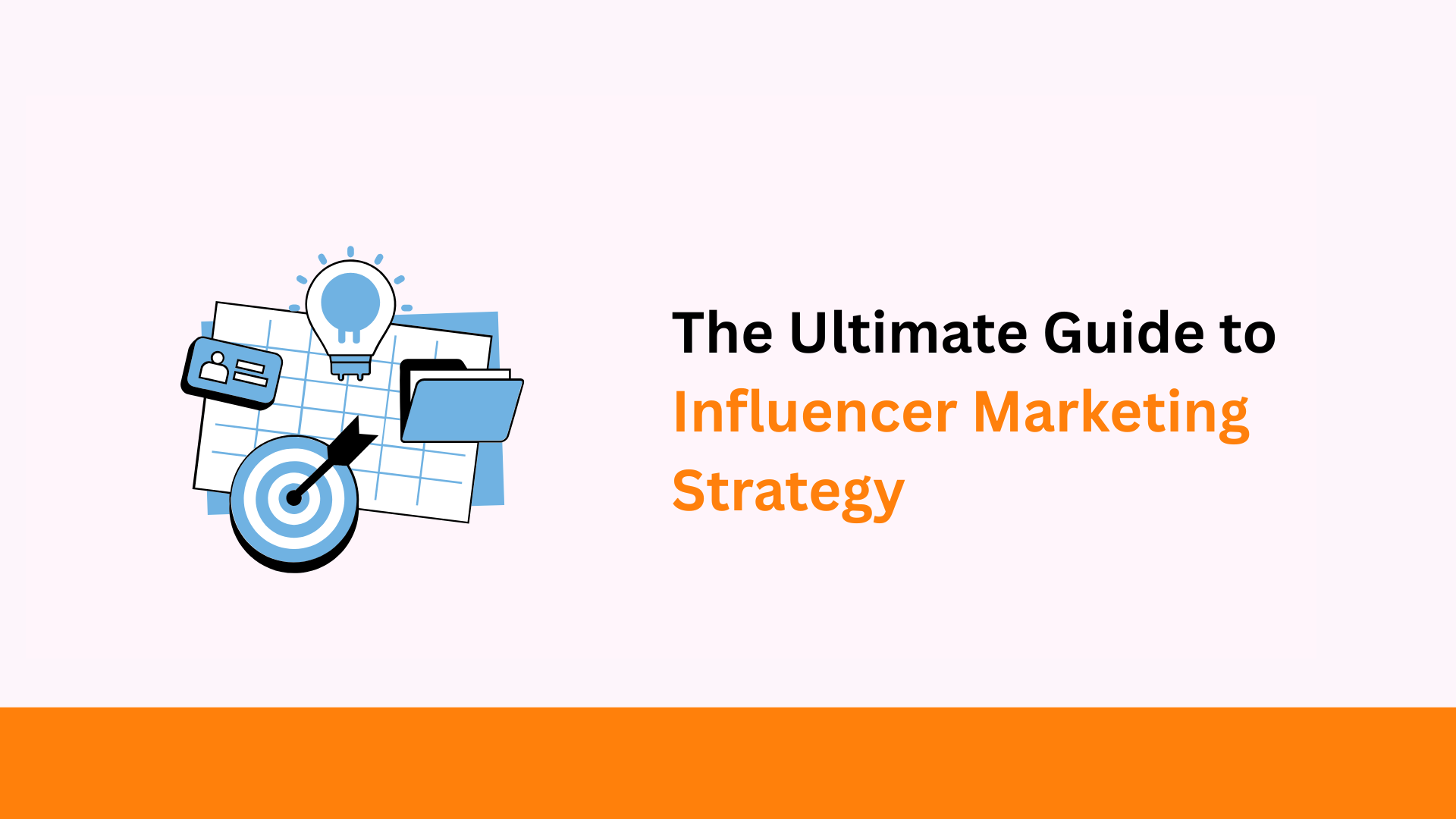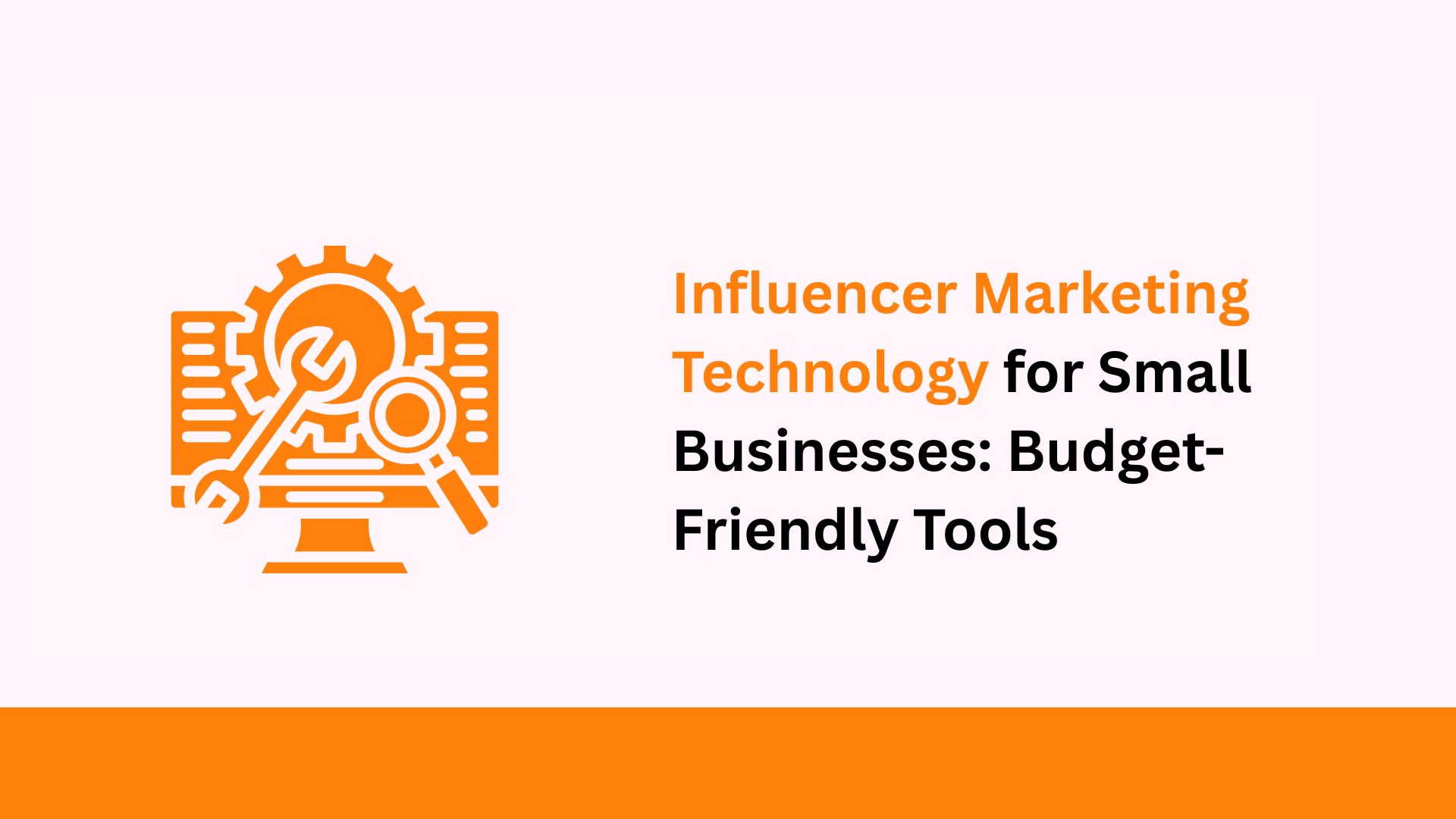TL;DR
- Influencer marketing strategies combine careful planning, creator selection, and performance measurement to drive brand growth
- Effective strategies align with specific business goals (awareness, conversions, loyalty) and match the right influencer tier to your objectives
- Content formats should be tailored to platforms and audience preferences, with co-created content delivering the highest engagement
- ROI measurement requires tracking both brand metrics (awareness, sentiment) and performance metrics (clicks, conversions, sales)
- Indian brands are seeing 6.7x ROI on influencer marketing, significantly outperforming traditional digital advertising
76% of Indian marketers increased their influencer marketing budgets in 2024, and for good reason. The explosion of short-form video content across Instagram Reels, YouTube Shorts, and an ever-growing creator economy has transformed how brands connect with consumers.
But throwing budget at random influencers won’t deliver results. You need a comprehensive strategy.
This guide breaks down everything you need to know about building an effective influencer marketing strategy in 2025, from selecting the right creators to measuring true ROI.
What Is an Influencer Marketing Strategy?
An influencer marketing strategy is a structured plan that leverages content creators to reach and engage your target audience. Unlike individual campaigns, a comprehensive strategy addresses your entire marketing funnel—from awareness to advocacy.
According to the Influencer Marketing Report 2024, 82% of consumers trust recommendations from content creators over traditional advertisements. This trust translates directly into business results when approached strategically.
A complete influencer marketing strategy includes:
- Clear business objectives aligned with marketing goals
- Target audience analysis and creator selection criteria
- Content guidelines and platform strategy
- Budget allocation across creator tiers
- Performance measurement and optimization framework
When executed effectively, influencer marketing delivers authentic storytelling that resonates with audiences in ways traditional advertising simply cannot.
Setting the Right Goals for Your Influencer Marketing Campaign
The most successful influencer marketing strategies start with crystal-clear objectives. Rather than vague goals like “increase brand awareness,” successful brands define specific, measurable outcomes.
Your objectives should align with your funnel stage:
Top Funnel (Awareness)
- Reach new audience segments
- Increase brand visibility in specific demographics
- Generate content for broader amplification
Middle Funnel (Consideration)
- Drive engagement with brand content
- Increase website traffic or app downloads
- Build credibility through expert endorsements
Bottom Funnel (Conversion)
- Generate qualified leads
- Drive sales through affiliate links or discount codes
- Increase conversion rates
A SMART framework ensures your goals remain actionable:
| SMART Component | Example |
| Specific | Increase website traffic from the 18-24 demographic in metro cities |
| Measurable | Drive 50,000 new Instagram followers over 3 months |
| Achievable | Generate 1,000 qualified leads through influencer discount codes |
| Relevant | Increase brand sentiment among tech-savvy professionals |
| Time-bound | Achieve a 20% sales lift during the Diwali shopping season |
Luxury beauty brand Forest Essentials aligned its influencer strategy around product education, partnering with skincare experts to explain Ayurvedic ingredients. This targeted approach led to a 43% increase in consideration among their target audience.
Choosing the Right Influencers for Your Brand
Influencer selection is perhaps the most critical element of your strategy. The right creators will authentically represent your brand while engaging your target audience.
In the Indian market, influencer categories typically break down as follows:
| Tier | Follower Count | Average Engagement | Cost Range (INR) |
| Nano | 1K-10K | 5-8% | ₹5,000-₹20,000 |
| Micro | 10K-100K | 3-5% | ₹20,000-₹1 lakh |
| Macro | 100K-1M | 2-3% | ₹1 lakh-₹10 lakhs |
| Celebrity | 1M+ | 1-2% | ₹10 lakhs+ |
While mega-celebrities might seem appealing, data consistently shows nano and micro-influencers deliver higher engagement rates and more authentic connections; smaller creators often deliver superior ROI for new brands or campaigns focused on community building.
Beyond follower count, evaluate creators on:
- Value alignment with your brand identity
- Content quality and aesthetic consistency
- Audience demographics and psychographics
- Past brand partnership performance
- Engagement quality (not just quantity)
Structuring an Effective Influencer Campaign
A well-structured campaign creates clear expectations for creators while maximizing impact for your brand. The most effective campaigns include:
Pre-campaign Setup
- Brief development with clear guidelines and expectations
- Content approval workflows and feedback processes
- Performance tracking mechanisms for each creator
- Emergency response plan for potential issues
Outreach and Negotiation
- Personalized outreach highlighting mutual value
- Clear compensation structure (monetary, product, affiliate)
- Detailed deliverable expectations and timeline
- Contract with usage rights, exclusivity terms, and disclosure requirements
Launch and Management
- Coordinated posting schedule across creators
- Engagement monitoring and community management
- Real-time optimization based on performance data
- Cross-promotion across brand channels
Food delivery platform Swiggy executed a masterclass in campaign structure with their #SwiggyInstamart campaign. They coordinated 150+ creators across different tiers, each showcasing quick delivery of specific product categories relevant to their audience niche. The structured approach drove 2 million app installs in just 8 weeks.
What Content Works Best with Influencers?
Content strategy varies dramatically across platforms and audience segments. While Instagram dominates Indian influencer marketing spend (41%), YouTube (27%), and newer platforms like Moj and Trell are growing rapidly.
The most effective content strategies adapt formats to both platform strengths and your marketing objectives:
- Reels: Product tutorials, before/after transformations, trending challenges
- Stories: Behind-the-scenes, limited-time offers, polls, and Q&As
- Feed posts: In-depth reviews, lifestyle integration, carousel education
YouTube
- Long-form reviews for complex products
- Comparison videos for the consideration stage
- Unboxing experiences for luxury items
- Day-in-the-life content for lifestyle brands
Content Formats by Objective
| Marketing Objective | Top-Performing Content Types |
| Brand Awareness | Entertaining, trendy content; challenges; lifestyle integration |
| Education | Tutorials; how-to guides; comparison videos; myth-busting |
| Conversion | Unboxings; reviews; before/after; exclusive discount codes |
| Loyalty | User-generated content campaigns, brand ambassador programs |
“Co-created content consistently outperforms creator-only or brand-only content,” notes Dhruv Chitgopekar, CEO of Collective Artists Network. “When brands collaborate with creators on concept development rather than simply dictating deliverables, engagement increases by nearly 300%.”
Metrics That Matter: Measuring Influencer Success
Measuring influencer marketing effectiveness requires tracking both brand impact and direct performance metrics. The most sophisticated Indian brands are now implementing comprehensive measurement frameworks:
Brand Metrics
- Awareness: Reach, impressions, follower growth
- Perception: Sentiment analysis, comment tone, message association
- Consideration: Website traffic, time on site, content engagement
Performance Metrics
- Conversion: Clicks, app installs, form completions
- Revenue: Sales attributed to creator codes, affiliate revenue
- Efficiency: Cost per acquisition, cost per engagement
When calculating ROI, include both immediate returns and long-term value:
ROI = (Value Generated – Campaign Cost) / Campaign Cost
Value generated should include:
- Direct revenue from trackable sales
- Estimated value of earned media
- Content production value (what you would pay to create similar assets)
- Customer lifetime value from new acquisitions
Leading Indian brands are now implementing attribution models that track cross-device journeys from influencer content to purchase. Myntra’s advanced attribution showed that 31% of influencer-driven purchases occurred up to 14 days after initial exposure, highlighting the importance of looking beyond immediate conversions.
The Future of Influencer Strategy
The influencer marketing landscape in India is evolving rapidly, with several key trends shaping strategy development:
Long-term Ambassador Relationships
Transactional one-off posts are giving way to ongoing partnerships. CRED’s ambassador program with comedians and creators has built a consistent brand voice and recognition through sustained collaboration.
AI-Powered Discovery and Matching
Platforms using machine learning now analyze creator content patterns, audience demographics, and performance metrics to identify ideal matches for specific campaign objectives.
Creator Commerce Integration
Beyond promotion, creators are becoming direct sales channels. Platforms like Meesho and Trell now enable creators to curate storefronts, with 37% of Gen Z consumers preferring to shop directly through creator recommendations.
Regulatory Compliance
The Advertising Standards Council of India (ASCI) continues to strengthen disclosure guidelines. Brands and creators must clearly label sponsored content, with violations resulting in increasing penalties.
Implementing Your Influencer Marketing Strategy
Creating an effective influencer marketing strategy requires careful planning, but the ROI potential makes it well worth the effort. By defining clear objectives, selecting aligned creators, and measuring meaningful outcomes, brands can leverage the authentic connections creators have built with their audiences.
For brands just starting with influencer marketing, begin with smaller campaigns focused on learning what resonates with your audience. Test different creator tiers, content formats, and calls-to-action to determine what drives the most value for your specific objectives.
As you scale your influencer program, invest in relationship building with your top-performing creators. The most successful brands view creators not as media channels but as creative partners who understand their audiences at a profound level.
With the right strategy in place, influencer marketing can become your brand’s most powerful channel for authentic connection and sustainable growth.
FAQs
- What is the average influencer marketing budget in India?
For established brands, influencer marketing typically accounts for 15-25% of digital marketing budgets. Startups often allocate 30-40% to leverage creator credibility in building brand awareness.
- How do I create an influencer campaign from scratch?
Start by defining clear objectives and audience targeting. Research creators who authentically align with your brand values and audience demographics. Develop a compelling brief with creative freedom balanced against brand guidelines. Implement tracking mechanisms before launch, and consistently measure both engagement and conversion metrics.
- What are the key success metrics for influencer marketing?
Success metrics vary by objective. For awareness, focus on reach, impressions, and audience growth. For consideration, track engagement rates, website traffic, and content saves. For conversion, measure click-through rates, conversion rates, and return on ad spend.
- What’s a good engagement rate for Indian influencers?
Engagement rates vary by platform and follower count. On Instagram, nano-influencers (1 K- 10 K) average 5-8% engagement, micro-influencers (10 K- 100 K) see 3-5%, and macro-influencers (100 K- 1 M) typically achieve 2-3%.
- How do B2B and B2C influencer strategies differ in India?
B2C strategies often leverage entertainment value and lifestyle integration, while B2B approaches focus on thought leadership and industry expertise. B2C campaigns typically use Instagram and YouTube, while B2B strategies favor LinkedIn and industry-specific platforms.



